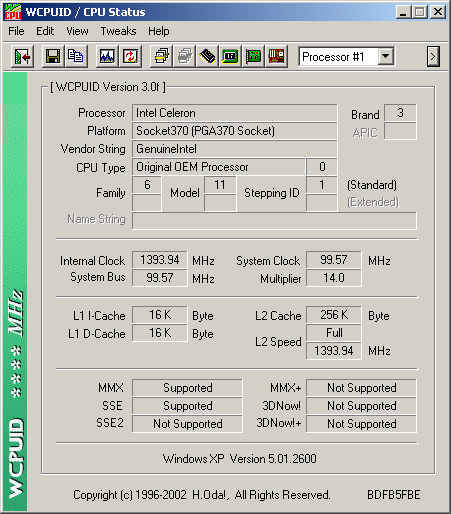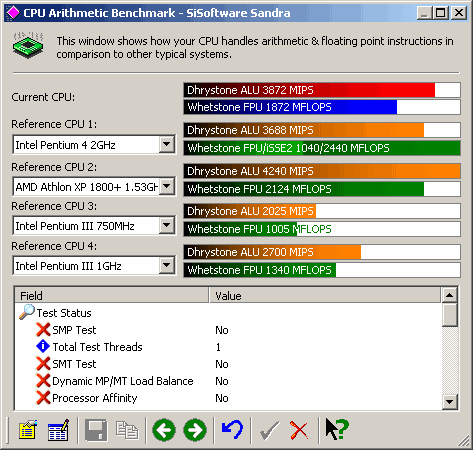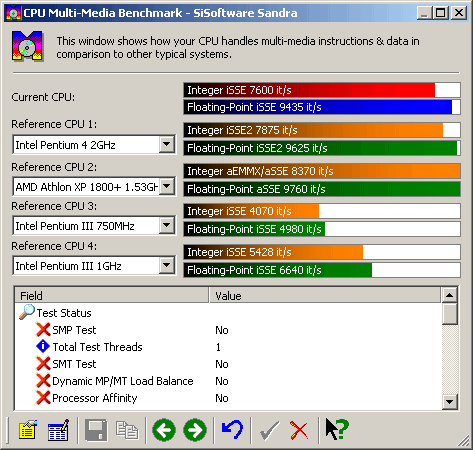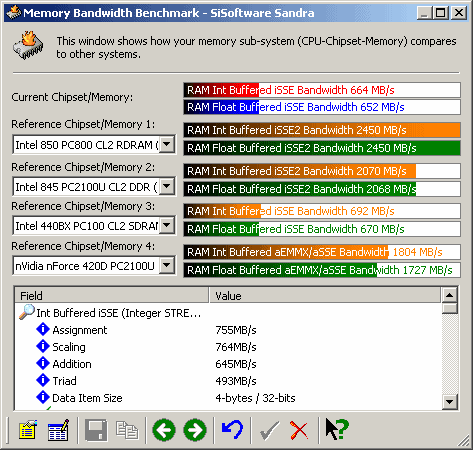
Powerleap PL-iP3/T v2.0 & Celeron 1.4 GHz Upgrade Review
written by Robert Hancock
Note: This is most a supplement to my original Powerleap PL-iP3/T 1.2 GHz upgrade review. This page focuses on the differences from the older version, and also includes updated benchmarks.
I recently received a sample of Powerleap's new PL-iP3/T version 2.0 adapter and Celeron 1.4 GHz upgrade package, and have tested it on my Dimension XPS R machine.
First of all, let's look at the differences in the adapter itself compared to the previous version. There aren't that many, the main change is that the adapter now features voltage adjustment jumpers. The previous adapter always set the core voltage to whatever the CPU requested, whereas this version can have the core voltage adjusted from 1.050 volts to 1.825 volts. The main utility of this feature will be for overclockers, as to get much overclocked speed out of a CPU you usually have to boost the core voltage from the standard setting. Also, apparently at least certain CPU clock speeds with these adapters will come with the core voltage setting one notch above default. Powerleap says this change helps solve problems with machines like some Dimension XPS T systems, which proved unstable with the original version at the standard core voltage.
As far as the CPU, it is basically the same as the Celeron 1.2 GHz, just 200 MHz faster. It is the same tA1 stepping of the Tualatin core as the 1.2 GHz was. You can view the main stats on the CPU here. The thermal design power of 34.5 watts is fairly impressive - some of the Pentium 4 CPUs nearly double that heat output (and power consumption) figure.
As my XPS R machine has no FSB overclocking capability, I wasn't able to do any overclocking tests of this CPU. However, Bob Matthews has done some tests with a 1.3 GHz version, his review is available here. He also has some more extensive benchmark numbers than the ones I've provided. Most likely, with a 1.4 GHz CPU you wouldn't be able to overclock it as much from the standard speed as with the 1.3, as eventually you'll run into the inherent maximum (without exotic cooling) of the CPU core, which is the same between the two.
Finally, the heatsink on the new adapter version is new, being an all-copper unit. You can see it (or at least, a very similar one) on Bob Matthews' review page I mentioned above (because Rob is too cheap to buy a digital camera :-) Compared to the aluminum Intel heatsink/fan unit I was using on my previous adapter, it's quite a bit smaller - the Intel looks huge by comparison. The heatsink/fan combination certainly seems to be effective - after running Seti@Home for a while, it hardly gets warm. As far as noise, it does produce more noise than my previous Intel heatsink/fan, but with a smaller heatsink and more heat to dissipate, you kind of have to expect that. Apparently the current fan version has changed from the kind Bob's adapter has in that it is now double ball bearing, instead of one ball and one sleeve bearing. This should increase the fan life somewhat.
Here is what WCPUID reports for the new CPU:

Not that much interesting here over what the 1.2 GHz showed, basically just the higher clock speed. Also, the current version of WCPUID now recognizes the Tualatin Celeron chips correctly.
Next, we'll see what SisSoft Sandra 2002 shows. (Note that these scores are not comparable to those in my last review because of the different Sandra version.) First, the Arithmetic Benchmark:

For comparison, the Celeron 1.2 GHz scores 3299 MIPS for the ALU and 1604 MFLOPS for the FPU in this test. These scores have increased in nearly exact proportion to the clock speed increase, which shows that this Sandra test focuses quite strongly on just the CPU, and doesn't stress the memory or chipset very much. Therefore, you can't expect overall system performance, or even overall CPU performance, to increase in the same proportion.
Nonetheless, this chip does post some impressive scores, actually beating out the Pentium 4 2.0 GHz in ALU speed. The Pentium III 750 MHz and 1 GHz are included for comparison - the gains over those chips are quite significant as well.
Next, let's look at the Sandra Multimedia Benchmark:

Once again, a pretty impressive showing, with the same caveats as before. The Celeron 1.2 GHz scored 6512 it's on Integer and 8085 it's on floating point.
Finally, the Memory Bandwidth Benchmark:

Unfortunately, the new CPU doesn't do much to increase memory bandwidth, and the old PC100 memory subsystem can't really compete in that regard with the dual-channel RDRAM and DDR memory on the newer motherboards. (You'll note my RAM score is slower than the standard BX chipset PC100 CL2 entry, this would likely be because I have some CL3 memory installed which forces it all down to that speed.) However, because the CPU itself only has a 100 MHz bus, this doesn't really bottleneck the CPU any more than it is already inherently bottlenecked. If you were to put together a Celeron 1.4 GHz system new, you'd likely see about the same performance, at least as far as the CPU/memory subsystem are concerned.
Also, at least compared to the Pentium 4, the Tualatin CPUs can run faster on the same available memory bandwidth, because of the CPU design (the Pentium 4 generally uses more memory bandwidth because of the tradeoffs made in its caching efficiency in order to increase the clock speed).
Conclusion:
Overall, this package is more of the same good stuff from Powerleap. Putting in a 1.4 GHz CPU will give a pretty significant performance boost to an older Slot 1-based machine. It's an especially good deal for the older XPS R machines, as you can triple the original CPU clock speed on the same motherboard. Of course, this upgrade will increase only the CPU performance. Things like application loading speed and boot time are influenced by the speed of the hard disk and amount of RAM, while frame rates in games usually depend fairly heavily on the video card as well as the CPU. Whether you decide to upgrade the CPU alone, or in conjunction with other upgrades like adding RAM, upgrading the hard drive, or replacing the video card, or buying a new machine altogether, is up to you. But Powerleap does certainly have some good options for you to consider.
(Unfortunately, it appears as though the current adapter version still doesn't work properly on XPS B-series systems. These machines seem to be relatively picky..)